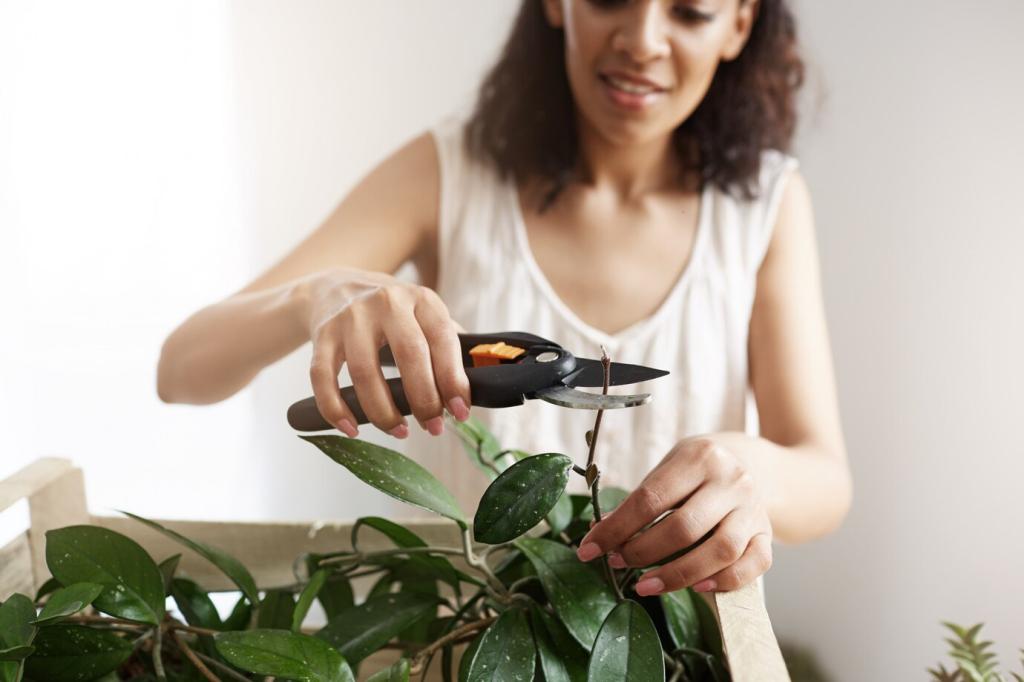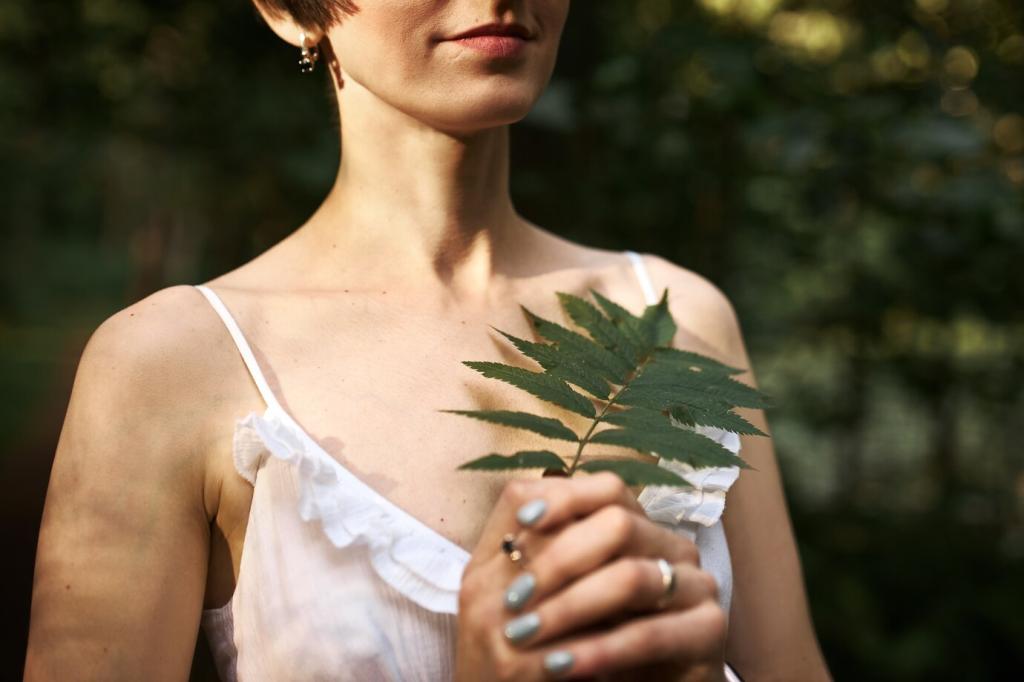
Eco-friendly Home Decor Ideas
Discover how to transform your living space with stylish eco-friendly home decor ideas designed to minimize environmental impact while maximizing comfort and beauty. This guide unveils innovative approaches, sustainable materials, and creative techniques for dressing your home in the freshest, greenest ways. Whether you’re a seasoned decorator or just starting to explore sustainable options, these ideas will inspire you to make conscious choices that benefit both your home and the planet.
Sustainable Furniture Choices
Reclaimed Wood Furniture
Reclaimed wood gives new life to timber that once served another purpose, reducing the need for freshly harvested trees and lowering environmental impact. Each piece holds a history and a unique charm, making your home both sustainable and visually interesting. Choosing tables, shelves, or chairs crafted from reclaimed wood is a tangible way to support forest conservation and responsible resource use. Moreover, reclaimed wood tends to be more durable and often features exceptional craftsmanship, ensuring longevity and timeless appeal in your decor.
Bamboo Essentials
Bamboo is celebrated for its rapid renewability and versatility, making it a staple in eco-friendly furniture and decor. Unlike hardwoods, bamboo matures quickly and regenerates after harvest, which translates to minimal ecological disruption. Incorporating bamboo chairs, stools, or accent furniture into your home not only looks chic and modern but also demonstrates commitment to sustainable living. Bamboo finishes can be sleek and stylish or rustic and earthy, bridging a spectrum of aesthetics without compromising on environmental values.
Upcycled Vintage Finds
Upcycling vintage furniture and decor breathes new life into pieces that might otherwise end up in landfills. Scouring thrift shops, flea markets, or online marketplaces can yield unique treasures, from mid-century coffee tables to ornate mirrors reimagined for modern spaces. Each upcycled item carries character and history, and by restoring, repainting, or reupholstering, you contribute to a culture of reuse and creative innovation. These one-of-a-kind pieces help reduce demand for new resources while adding soulful touches to your home.
Natural and Non-toxic Materials
Choosing textiles crafted from organic cotton and linen means fewer chemical pesticides and synthetic fertilizers are used during production, benefiting both the environment and your indoor air quality. These natural textiles are soft to the touch, moisture-wicking, and hypoallergenic, making them perfect for bedding, curtains, and upholstery. Their timeless allure suits a variety of decors, while their biodegradability ensures they won’t contribute to landfill waste at the end of their lifecycle.
Energy-efficient Lighting
LED Lighting Upgrades
Switching out traditional incandescent bulbs for LEDs is a simple yet impactful way to save energy. LED bulbs use a fraction of the electricity, last significantly longer, and emit less heat, reducing your home’s overall power consumption. LEDs are now available in a full spectrum of color temperatures and compatible with most fixtures, making it effortless to enhance every room’s glow while supporting sustainability.
Solar-powered Fixtures
Harnessing the power of the sun to light your home outdoors and in select indoor spaces is an environmentally sound choice. Solar-powered path lights, garden accents, or even indoor lamps equipped with solar panels charge during the day and cast a warm glow at night without consuming grid electricity. Integrating solar fixtures not only slashes energy bills but also demonstrates investment in clean, renewable energy right at home.
Statement Fixtures from Recycled Materials
Light fixtures crafted from recycled glass, metal, or plastic turn waste into wonder, transforming ordinary spaces into eco-chic statements. These unique pieces often showcase artisan craftsmanship and offer eye-catching alternatives to mass-produced lighting. By choosing recycled-material lighting, you support closed-loop systems that give waste new purpose, opening the door to eco-friendly decor that’s both stunning and sustainable.
Indoor Plants for Fresh Air
Certain houseplants, such as spider plants, peace lilies, and snake plants, are known for their ability to filter out common indoor toxins. These air-purifying heroes can effectively remove formaldehyde, benzene, and other pollutants released by building materials, ensuring cleaner and fresher indoor air. Strategically placing these plants in bedrooms, living rooms, and home offices promotes wellness while enhancing the aesthetic appeal of your space.

Eco-conscious Wall Art
01
Art from Recycled Materials
Artists around the world are crafting stunning works from materials once destined for the landfill—think sculptures from scrap metal, collages from reclaimed wood, and canvases adorned with repurposed textiles. By selecting art crafted from recycled content, you help close the waste loop and support creative upcycling. These distinctive pieces become not just visual centerpieces but also conversation starters about environmental stewardship and artistic innovation.
02
Printed Poster Alternatives
Instead of mass-produced posters, consider fabric wall hangings, hand-printed banners, or digital art displays as eco-friendly alternatives. Fabric prints, especially those made from organic or recycled fibers, reduce paper consumption and avoid the chemicals used in glossy poster production. Digital art frames can cycle through multiple images, offering variety and reducing waste altogether. These creative options allow you to adorn your walls sustainably while keeping style and flexibility at the forefront.
03
Support Local and Fair-trade Artists
Purchasing art directly from local painters, photographers, or fair-trade cooperatives supports responsible production methods and reduces the environmental impact associated with long-distance shipping. Many local artists use natural pigments and reclaimed canvases in their work, further enhancing the sustainability factor. By choosing local and fair-trade art, you not only invest in the local economy but also cultivate an authentic sense of place within your home.
Water-saving Solutions
Low-flow Fixtures in Bathrooms
Installing low-flow showerheads and faucets reduces water consumption significantly while still providing a luxurious experience. Modern designs blend seamlessly with a range of decor styles and often include innovative settings to further tailor your water use. These fixtures help conserve precious resources without drawing attention away from your desired aesthetic, marrying utility with eco-responsibility.
Decorative Rainwater Collection
Integrating rainwater harvesting into your outdoor decor is an eco-savvy move that also adds charm to gardens or patios. Stylish rain barrels and decorative cisterns collect runoff from your roof, providing water for plants and landscaping. Choosing designs that mimic classic urns or fit with your outdoor theme reinforces the harmony between sustainability and beauty, allowing you to nourish your garden sustainably.
Drought-tolerant Landscaping Accents
Outdoor spaces can be both stunning and sustainable by incorporating drought-tolerant plants and landscaping features. Ornamental grasses, succulents, and native greenery require minimal irrigation and maintenance, ensuring your garden remains vibrant even during dry seasons. Decorative mulches and permeable hardscaping materials further reduce water loss, supporting an environment-friendly approach to outdoor decor.
DIY and Handmade Accents
Scented sachets, essential oil sprays, and herbal cleaning blends made at home not only keep surfaces sparkling but also avoid the harsh chemicals found in conventional products. DIY cleaners are often made from common pantry ingredients like vinegar and baking soda, packaged in reusable containers. They add a touch of personalization to household chores, are gentler on the environment, and can be stylishly presented as part of your decor.
